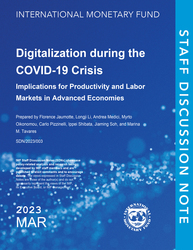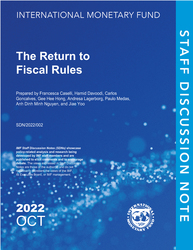
Digitalization During the COVID-19 Crisis: Implications for Productivity and Labor Markets in Advanced Economies
Digitalization induced by the pandemic was seen both as a possible silver-lining from the crisis that could increase longer-term productivity and a risk for further labor market inequality between digital and non-digital workers.
READ MORE...
Volume/Issue:
Volume 2023
Issue 003
Publication date: March 2023
ISBN: 9798400232596
$20.00
Add to Cart by clicking price of the language and format you'd like to purchase
Available Languages and Formats
| English |
Prices in red indicate formats that are not yet available but are forthcoming.
Topics covered in this book
This title contains information about the following subjects.
Click on a subject if you would like to see other titles with the same subjects.
Labor , Economics- Macroeconomics , Economics / General , Digitalization , COVID-19 , labor market , productivity , productivity regression analysis , digitalization level , longer-term productivity , pandemic-induced digitalization , labor market tightness , Labor productivity , Labor markets , Total factor productivity , Europe
Summary
Digitalization induced by the pandemic was seen both as a possible silver-lining from the crisis that could increase longer-term productivity and a risk for further labor market inequality between digital and non-digital workers. The note shows that the pandemic accelerated digitalization and triggered a partial catch-up by less digitalized entities in advanced economies. Higher digitalization levels shielded substantially productivity and hours worked during the crisis. However, the extent to which the pandemic-induced digitalization led to structural change in the economy is less clear. Less digitalized sectors have rebounded more strongly, albeit after stronger declines, and while workers in digital occupations were more shielded from the crisis, there does not appear to be a structural change in the composition of labor demand. Meanwhile, shifts in labor supply are more likely to be permanent, driven by the increase in working from home.
Copyright © 2010 - 2025
Powered by:
AIDC



